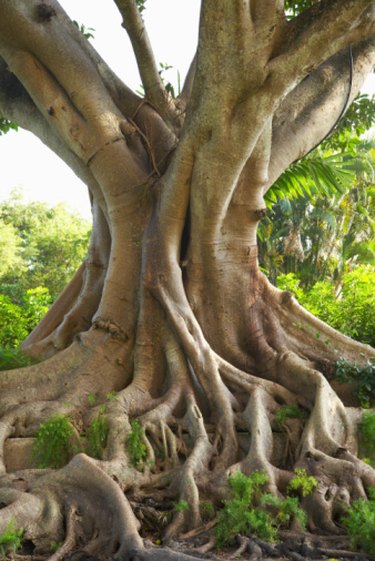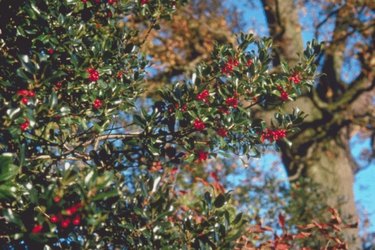
Most flowering plants have both male and female flowers on a single plant. This enables pollinators such as bees to easily assist in plant reproduction by moving pollen from a male flower to the female flower next to it. Some plants however, have only male or female flowers on a given plant. These are dioecious plants, and to ensure reproduction, gardeners must plant male and females in close proximity.
Flowering trees
Video of the Day
Many flowering trees are dioecious, including mulberries, fig trees, hollies, and the ginkgo. In the case of plants with pollens that aggravate allergies, such as cottonwoods and boxelders, it can be helpful to plant only female plants nearby windows and walkways to reduce symptoms. Other plants have fruit that can become a nuisance when it falls (such as mulberries and ornamental figs); in this case, planting only males can aid the urban gardener in maintaining a tidy landscape.
Video of the Day
Flowering shrubs

Shrubs can cause the same problems for landscapers and gardeners as their larger tree cousins. While smaller, and often faster growing, shrubs planted specifically for their fragrant flowers, as in the case of spicebush, can be either the male or female plant. But to best appreciate the seasonal red fruits of holly plants or the medicinal orange berries of the sea buckthorn, be sure to plant both male and female varieties.
Flowering vines
While most varieties of clematis (a fragrant flowering vine) grown in the United States are monoecious -- meaning both male and female flowers grow on the same vine -- the New Zealand variety is dioecious. Some fruiting vines are dioecious as well. Urban gardeners hoping to grow a backyard crop of currants or kiwis need to plant at least one male plant to every three to five females to ensure a harvest of fruits.
Smaller plants
Dioecious ornamental flowers are less common than trees, shrubs and vines. Two notable exceptions are common crops in different parts of the world. Amaranth, an edible grain grown widely in Africa, is dioecious. The hemp plant, whose fibrous stems are used to make rope and paper while its oil-rich seeds are used in nutritional supplements, is dioecious naturally – however industrial farming practices favor the more easily propagated monoecious mutation.